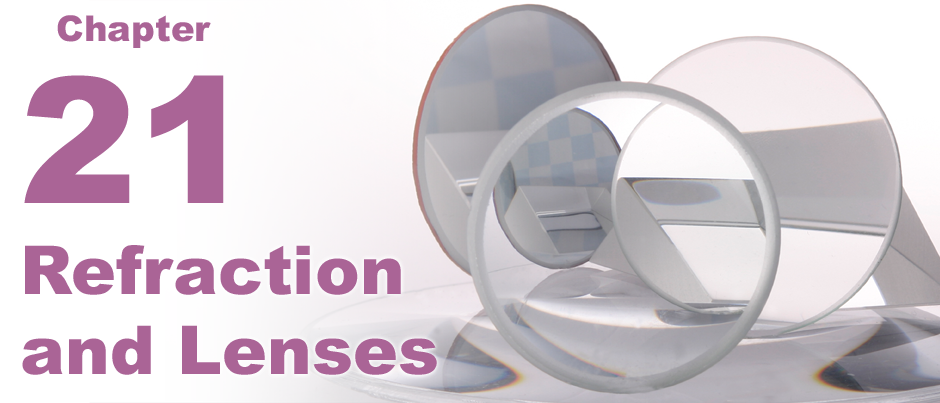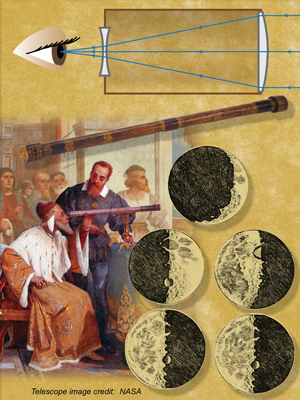 |
The eyes of all higher animals, including yourself, contain natural lenses. In technology, lenses are ubiquitous, being essential to every camera, microscope, eyeglass, projector, microscope, and optical fiber system. Lenses have become so much a part of technology that for the price of a few movie tickets you can buy a small telescope much more powerful than the one Galileo used to change our worldview in 1610. 
|
 Although spectacle lenses were made in Italy as early as the 13th century, optics remained a wealthy person’s novelty for the next 300 years. A lens maker in the Netherlands named Hans Lippershey is credited with the first design of a telescope in 1608 that used two lenses at the opposite ends of a tube. His prototypes had magnifications of only three, but news of his invention spread remarkably fast across Europe and Southeast Asia. By 1609 news of Lippershey’s telescope reached Galileo Galilei, then a mathematician at the University of Padua.
Although spectacle lenses were made in Italy as early as the 13th century, optics remained a wealthy person’s novelty for the next 300 years. A lens maker in the Netherlands named Hans Lippershey is credited with the first design of a telescope in 1608 that used two lenses at the opposite ends of a tube. His prototypes had magnifications of only three, but news of his invention spread remarkably fast across Europe and Southeast Asia. By 1609 news of Lippershey’s telescope reached Galileo Galilei, then a mathematician at the University of Padua.
Galileo ground his own lenses and varied parameters of the telescope design to improve it. Galileo’s early instrument used a convex lens at the entrance to the telescope and a concave lens as an eyepiece. Most people, including Galileo, thought the device would have applications in the military, such as for viewing enemy troops from a distance, or in navigation on the seas. 
|
By 1610, Galileo pointed his new telescope at the heavens. Galileo drew the craters and shadows he saw on the Moon. He observed four bright points of light near the planet Jupiter, saw that they moved from night to night in orbits around the planet, and deduced that they were moons of Jupiter. He saw the phases of Venus and made the connection to the phases of the Moon. Even though his telescope had low magnification by modern standards, Galileo could see that the nebulous Milky Way resolved into hundreds and thousands of individual stars. Galileo’s discoveries put our own world into its true context—that the Earth orbits the Sun and moons orbit their planets, a model called heliocentrism. Astronomy as a science was born. 
 |
Galileo’s modest telescopes have given way to massive, modern instruments. The largest refracting telescope at Yerkes Observatory in Wisconsin has a diameter of 1 m. The largest telescopes today, such as the 10 m Keck Telescopes in Hawaii, use mirrors instead of lenses. 
|
| |
|

